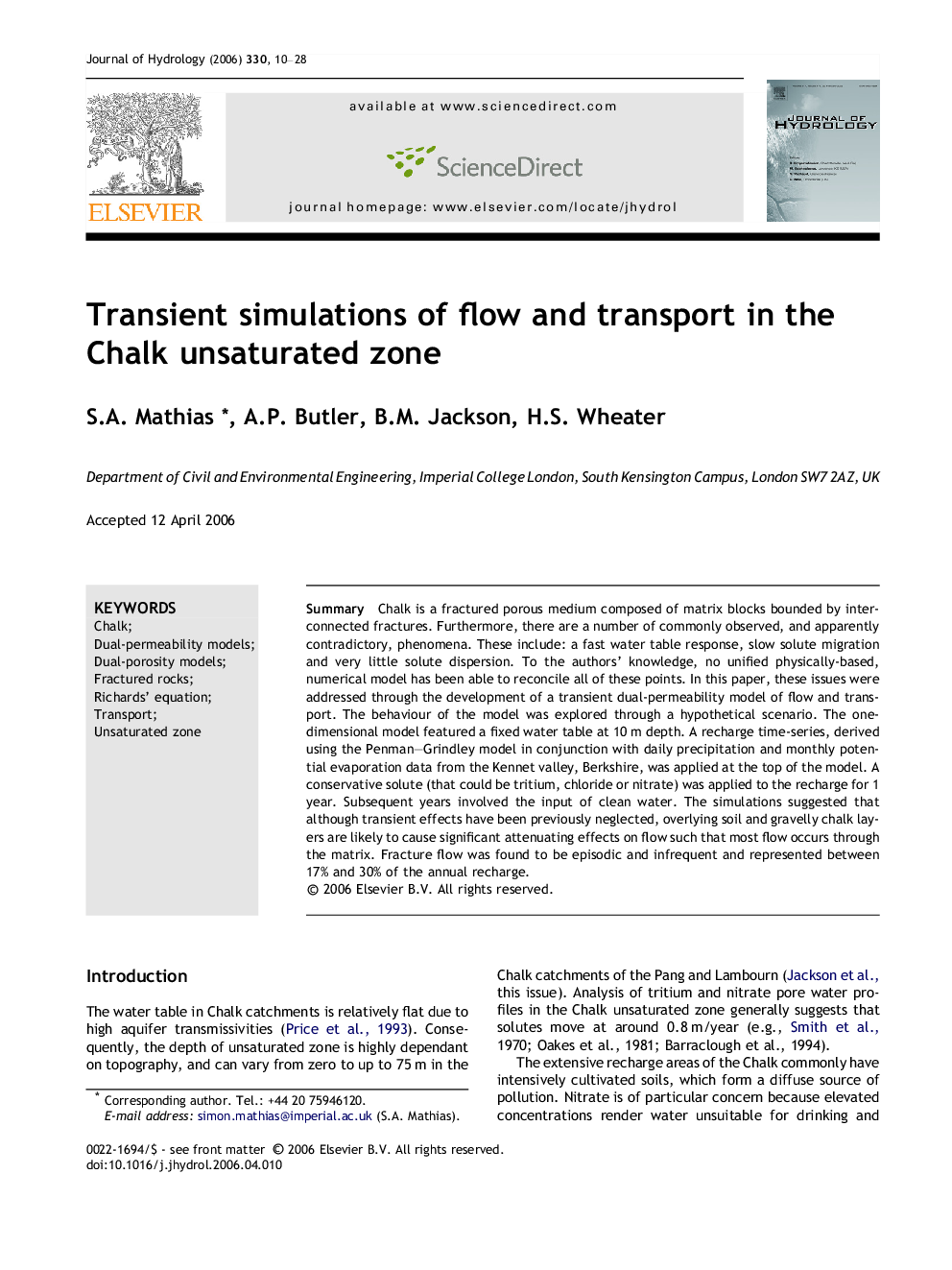| Article ID | Journal | Published Year | Pages | File Type |
|---|---|---|---|---|
| 4580520 | Journal of Hydrology | 2006 | 19 Pages |
Abstract
Chalk is a fractured porous medium composed of matrix blocks bounded by interconnected fractures. Furthermore, there are a number of commonly observed, and apparently contradictory, phenomena. These include: a fast water table response, slow solute migration and very little solute dispersion. To the authors' knowledge, no unified physically-based, numerical model has been able to reconcile all of these points. In this paper, these issues were addressed through the development of a transient dual-permeability model of flow and transport. The behaviour of the model was explored through a hypothetical scenario. The one-dimensional model featured a fixed water table at 10Â m depth. A recharge time-series, derived using the Penman-Grindley model in conjunction with daily precipitation and monthly potential evaporation data from the Kennet valley, Berkshire, was applied at the top of the model. A conservative solute (that could be tritium, chloride or nitrate) was applied to the recharge for 1 year. Subsequent years involved the input of clean water. The simulations suggested that although transient effects have been previously neglected, overlying soil and gravelly chalk layers are likely to cause significant attenuating effects on flow such that most flow occurs through the matrix. Fracture flow was found to be episodic and infrequent and represented between 17% and 30% of the annual recharge.
Related Topics
Physical Sciences and Engineering
Earth and Planetary Sciences
Earth-Surface Processes
Authors
S.A. Mathias, A.P. Butler, B.M. Jackson, H.S. Wheater,
